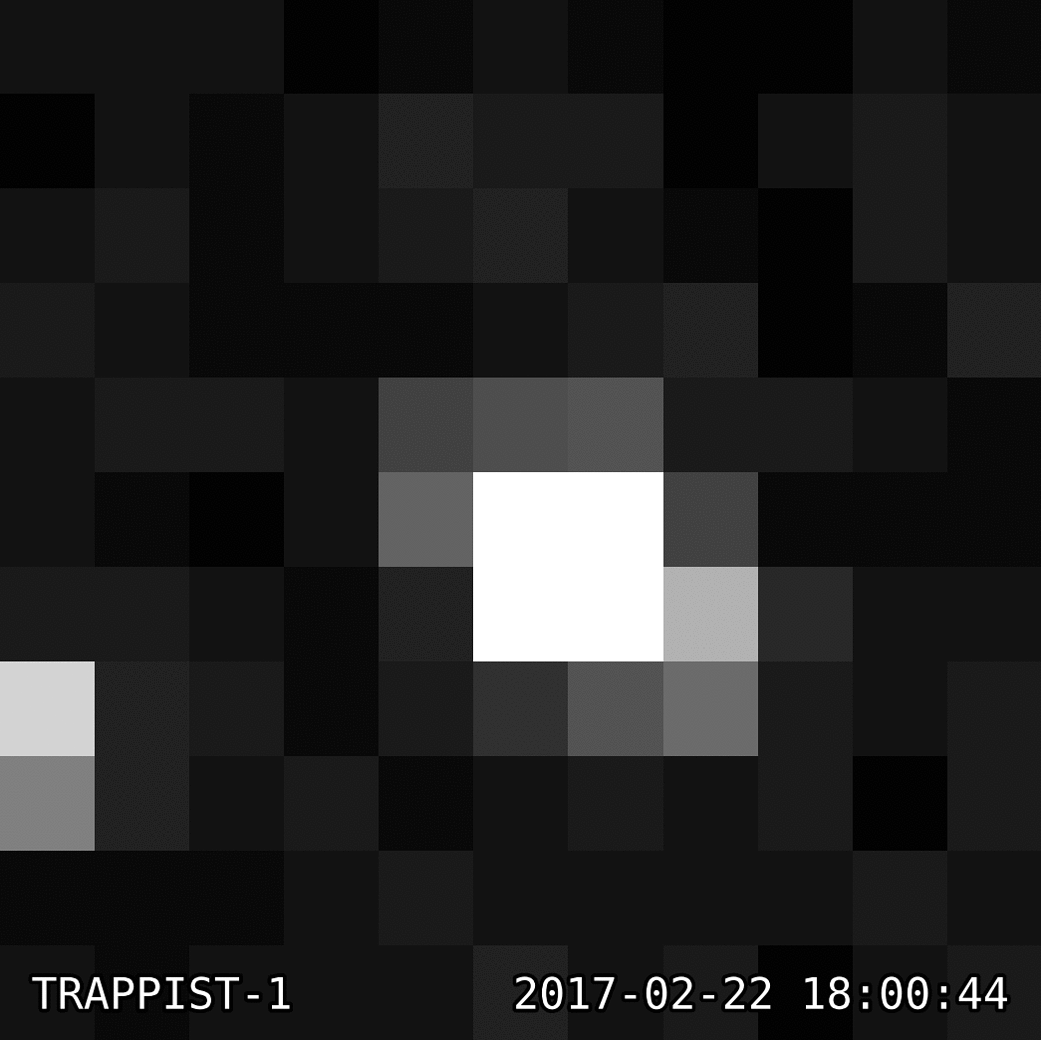This animation shows the amount of light detected by each pixel in a small section of the camera onboard NASA’s Kepler space telescope. The light collected from TRAPPIST-1, an ultra-cool dwarf star approximately 40 light-years from Earth, is at the center of the image. Not directly visible in the movie are the seven Earth-size planets that orbit TRAPPIST-1.
Kepler detects a change in brightness when a planet passes in front of a star from the vantage point of the telescope. Transiting planets block a tiny fraction of starlight that produces miniscule dips in the brightness of their host star. An Earth-size planet passing in front of a small ultra-cool dwarf star like TRAPPIST-1 creates less than a one percent dip in brightness, and is not visible with the naked eye.
Astronomers use sophisticated algorithms to search the data for these dips in brightness, and in particular, to correct for the spacecraft’s small movements in space—this is the ‘flickering’ of the pixels seen in the movie.
During the period of Dec. 15, 2016 and March 4, the Kepler spacecraft, operating as the K2 mission, observed TRAPPIST-1 for 74 days. This animation shows 60 brightness measurements or photos taken by Kepler’s onboard camera once a minute for an hour on February 22. Called a target pixel file, the image covers an area of 11 square pixels or 44 square arcseconds of the sky. This area is equivalent in size to holding up a grain of sand at arms length towards the sky.
Credit: NASA Ames/G. Barentsen




























